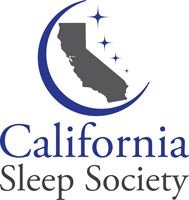By: Sam Kashani, MD, FAASM
In August 2021, Jazz Pharmaceuticals announced the US FDA approval of Xywav for the treatment of idiopathic hypersomnia in adults. Xywav, an oral solution consisting primarily of oxybate (GHB), already has approval for the treatment of narcolepsy, however this new indication is a tremendous steppingstone in the right direction of providing more options for patients with IH, a sleep disorder that, at this time, has no specific medication indicated for treatment.
On August 12, 2021, the New York Times published an article covering this news, an article that was considered by many in the sleep medicine world to be somewhat one-sided. The article suggests that IH may possibly be overdiagnosed, as other medical conditions, such as depression, may be associated with excessive daytime somnolence and such conditions should be considered before a diagnosis of IH is made. Additionally, the article points out the abuse potential for Xywav given its core component of GHB, commonly referred to as the ‘date-rape drug’, which is certainly a legitimate concern. With that said, rather than highlighting the well-known concerns of prescribing this medication as well as its potential side effects, the article does little to celebrate this breakthrough in the world of clinical sleep medicine. IH affects over 40,000 people in the United States, and until now, these patients have had limited options with regard to the treatment of their debilitating symptoms which include excessive daytime somnolence, prolonged sleep inertia, unrefreshing naps, and brain fog. Modafinil, a commonly prescribed first line treatment for excessive sleepiness associated with narcolepsy, sleep apnea, and shift work disorder, is the sole non-stimulant wake promoting agent that patients with IH may consider trying, as other non-stimulant wake-promoting agents which DO have approval for the above mentioned conditions are not available to patients with IH due to lack of insurance coverage. Additionally, traditional stimulants including amphetamines and methylphenidate, are also reasonable options for patients with IH, though these medications have their own side effects and concerns, including cardiovascular risks. Furthermore, none of these medications have approval specifically for the treatment of IH and thus, insurance companies do not provide any coverage or financial support for these medications.
The approval of Xywav marks the very first time that a medication has a specific indication for the treatment of IH. Multiple studies have looked at other treatments for IH, including clarithromycin, an antibiotic commonly used to treat infections such as H. Pylori, as well as flumazenil, a medication used as an antidote for benzodiazepine overdose, and have demonstrated benefit with regard to the treatment of daytime sleepiness in patients with IH. Nonetheless, these medications have promising but limited data with respect to use and long-term benefit/effects.
With all of these limitations, the approval of a medication for the indication of the treatment of IH is nothing short of a major milestone in treating patients with this debilitating sleep disorder. As such, more studies and robust data will be needed to not only better understand the etiology and treatment of this disease, but also provide these patients with more treatment options. As a sleep medicine specialist who commonly treats disorders of hypersomnolence, including narcolepsy and IH, I’m very concerned with the potential side effects associated with such medications, the same way that I’m concerned about my patients being unable to complete school because their excessive sleepiness is interfering with their ability to complete their assignments or study for exams. The same way I’m concerned about my patients being unable to spend time with their families because they require prolonged daytime naps which prevent them from picking their kids up from school, or my patients being unable to drive or in some cases afraid to drive due to extreme difficulty with maintaining wakefulness during the daytime. Whether or not this condition is over-diagnosed, IH is very much a real disease and in addition to more research and data, a stronger understanding and sense of empathy is also needed to better understand this condition.

